Workers’ Aging Management—Human Fatigue at Work: An Experimental Offices Study
Abstract
:Featured Application
Abstract
1. Introduction
2. Fatigue in Working Contexts
Technologies for Human Fatigue Estimation and Detection
3. Proposed Approach
- Non-Fatigue (NF): the program detects that the subject is not fatigued; both eyes are recognized as open while the mouth is closed (there is no yawn).
- Fatigue (F): the program detects fatigue in the subject, detecting poor opening or closing of the eyelids and possibly yawning, both eyes, even if scarcely open, are recognized as closed.
- Not Detected (ND): the program cannot identify the subject’s face, so it is impossible to extract the images related to eyes and mouth; in the console, the outcome of the last survey carried out remains visible.
- False Fatigue (FF): the program recognizes the fatigued subject even when it is not shown by a visual check. This happens when the direction of the gaze changes, especially downwards.
4. Experimental Study
5. Results and Discussions
- One of the most significant critical points is the sensitivity to the rotation of the face and the direction of the gaze: when the subject focuses his gaze in a direction different from that of the camera, the eyes appear to have a different opening, although this is not associated with any state of fatigue. In this case, the program gives the result of “fatigue” as the eye is recognized as closed. This criticality was recognized in the experiments and to avoid it, all the experiments records were analyzed and when this criticality was recognized the experiment result was indicated as “False Fatigue”. The presence of beard in the subject, especially if thick, often results in “Fatigue”, recognized through visual verification as False Fatigue, as the mouth is incorrectly detected as open, generating the alarm associated with yawning. This criticality is probably due to the limited presence of bearded individuals in the database.
- The ambient lighting was very incisive in the evaluation, especially in the late afternoon recordings causing the majority of the non-detected results. Another criticality of the software was identified in the difficulties to read the face and eye shape when the subject analyzed has glasses. Another improvement of the software when it is applied to the production context could be related to the yawing detection that in the driving sleepiness detection could be of interest, but in the production context not necessarily. This suggestion is motivated by the fact that the software sometimes when the subject yaws give the result of “non-detected” instead of “fatigue”, so the yawing detection in production context could be misleading from the sleepiness detection.
- The problems related to the rotation of the face have almost been solved; those attached to the gaze direction remain.
- Criticalities related to lighting were very attenuated and the results not detected, almost present due to sporadic adjustments of the hat by the subject, were almost eliminated.
- The critical issues attached to the erroneous fatigue warnings due to states of the open mouth caused by the presence of thick beard were also attenuated: the greater closeness to the face allowed the program a greater definition of the contours.
6. Conclusions
Author Contributions
Funding
Acknowledgments
Conflicts of Interest
References
- Lassus, L.A.P.; Lopez, S.; Roscigno, V.J. Aging workers and the experience of job loss. Res. Soc. Strat. Mobil. 2015, 41, 81–91. [Google Scholar] [CrossRef] [Green Version]
- Peruzzini, M.; Pellicciari, M. A framework to design a human-centred adaptive manufacturing system for aging workers. Adv. Eng. Inform. 2017, 33, 330–349. [Google Scholar] [CrossRef]
- Dimovski, V.; Grah, B.; Colnar, S.; Bogataj, D. Age Management of Industrial Workers Based on the Multiple Decrement Modelling. Procedia Manuf. 2019, 39, 1455–1463. [Google Scholar] [CrossRef]
- Norheim, K.L.; Samani, A.; Bønløkke, J.H.; Omland, Ø.; Madeleine, P. On the role of ageing and musculoskeletal pain on dynamic balance in manual workers. J. Electromyogr. Kinesiol. 2020, 50, 102374. [Google Scholar] [CrossRef]
- Caponecchia, C.; Coman, R.L.; Gopaldasani, V.; Mayland, E.C.; Campbell, L. Musculoskeletal disorders in aged care workers: A systematic review of contributing factors and interventions. Int. J. Nurs. Stud. 2020, 110, 103715. [Google Scholar] [CrossRef]
- Miranti, R.; Li, J. Working hours mismatch, job strain and mental health among mature age workers in Australia. J. Econ. Ageing 2020, 15, 100227. [Google Scholar] [CrossRef]
- Mitra, S.; Gao, Q.; Chen, W.; Zhang, Y. Health, work, and income among middle-aged and older adults: A panel analysis for China. J. Econ. Ageing 2020, 17, 100255. [Google Scholar] [CrossRef]
- French, S.; Bedford, T.; Pollard, S.J.; Soane, E. Human reliability analysis: A critique and review for managers. Saf. Sci. 2011, 49, 753–763. [Google Scholar] [CrossRef] [Green Version]
- Reason, J. Human Error; Cambridge University Press: Cambridge, UK, 1990. [Google Scholar]
- Sanders, J.; Moray, N.P. Human Error: Cause, Prediction and Reduction: Analysis and Synthesis; Lawrence Erlbaum Associates: Mahwah, NJ, USA, 1991. [Google Scholar]
- Di Pasquale, V.; Miranda, S.; Iannone, R.; Riemma, S. A Simulator for Human Error Probability Analysis (SHERPA). Reliab. Eng. Syst. Saf. 2015, 139, 17–32. [Google Scholar] [CrossRef]
- Kolus, A.; Wells, R.; Neumann, W.P. Production quality and human factors engineering: A systematic review and theoretical framework. Appl. Ergon. 2018, 73, 55–89. [Google Scholar] [CrossRef]
- Di Pasquale, V.; Fruggiero, F.; Iannone, R.; Miranda, S. A model for break scheduling assessment in manufacturing systems. Comput. Ind. Eng. 2017, 111, 563–580. [Google Scholar] [CrossRef]
- Di Pasquale, V.; Miranda, S.; Neumann, W.P.; Setayesh, A. Human reliability in manual assembly systems: A Systematic Literature Review. IFAC-PapersOnLine 2018, 51, 675–680. [Google Scholar] [CrossRef]
- Kirwan, B. Validation of human reliability assessment techniques: Part 1—Validation issues. Saf. Sci. 1997, 27, 25–41. [Google Scholar] [CrossRef]
- Kirwan, B. Validation of human reliability assessment techniques: Part 2—Validation results. Saf. Sci. 1997, 27, 43–75. [Google Scholar] [CrossRef]
- Olivares, R.D.C.; Rivera, S.S.; Mc Leod, J.E.N. A novel qualitative prospective methodology to assess human error during accident sequences. Saf. Sci. 2018, 103, 137–152. [Google Scholar] [CrossRef]
- De Ambroggi, M.; Trucco, P. Modelling and assessment of dependent performance shaping factors through Analytic Network Process. Reliab. Eng. Syst. Saf. 2011, 96, 849–860. [Google Scholar] [CrossRef]
- Musharraf, M.; Smith, J.; Khan, F.; Veitch, B.; MacKinnon, S. Incorporating individual differences in human reliability analysis: An extension to the virtual experimental technique. Saf. Sci. 2018, 107, 216–223. [Google Scholar] [CrossRef]
- Rasmussen, M.; Standal, M.I.; Laumann, K. Task complexity as a performance shaping factor: A review and recommendations in Standardized Plant Analysis Risk-Human Reliability Analysis (SPAR-H) adaption. Saf. Sci. 2015, 76, 228–238. [Google Scholar] [CrossRef]
- Yeow, J.A.; Ng, P.K.; Tan, K.S.; Chin, T.S.; Lim, W.Y. Effects of Stress, Repetition, Fatigue and Work Environment on Human Error in Manufacturing Industries. J. Appl. Sci. 2014, 14, 3464–3471. [Google Scholar] [CrossRef] [Green Version]
- Mariana, M.; Sahroni, T.R.; Gustiyana, T. Fatigue and Human Errors Analysis in Petrochemical and Oil and Gas Plant’s Operation. In Proceedings of the International Conference on Industrial Engineering and Operations Management, Bandung, Indonesia, 6–8 March 2018. [Google Scholar]
- Griffith, C.D.; Mahadevan, S. Inclusion of fatigue effects in human reliability analysis. Reliab. Eng. Syst. Saf. 2011, 96, 1437–1447. [Google Scholar] [CrossRef] [Green Version]
- Rasmussen, M.; Laumann, K. The evaluation of fatigue as a performance shaping factor in the Petro-HRA method. Reliab. Eng. Syst. Saf. 2020, 194, 106187. [Google Scholar] [CrossRef]
- Sherry, P. Fatigue Countermeasures in the Railroad Industry: Past and Current Developments. 2000. Available online: https://trid.trb.org/view/713380 (accessed on 19 February 2020).
- Chollet, B. U.S. Patent and Trademark Office: Washington, DC, USA. U.S. Patent No. 10,029,613, 24 July 2018. [Google Scholar]
- Ji, Q.; Lan, P.; Looney, C. A probabilistic framework for modeling and real-time monitoring human fatigue. IEEE Trans. Syst. Man Cybern. Part A Syst. Hum. 2006, 36, 862–875. [Google Scholar]
- Martensson, H.; Keelan, O.; Ahlstrom, C. Driver Sleepiness Classification Based on Physiological Data and Driving Performance from Real Road Driving. IEEE Trans. Intell. Transp. Syst. 2018, 20, 421–430. [Google Scholar] [CrossRef]
- Shimokawa, H.; Hirose, C.; Yasushi, M. Sleepiness Calculation Device. U.S. Patent No. US 9,993,194 B2, 12 June 2018. [Google Scholar]
- Dinges, D.F. An overview of sleepiness and accidents. J. Sleep Res. 1995, 4, 4–14. [Google Scholar] [CrossRef]
- Dinges, D.F.; Broughton, R.J. The Significance of Napping: A Synthesis. In Sleep and alertness: Chronobiological, behavioral, and medical aspects of napping; Raven Press: New York, NY, USA, 1989; pp. 299–308. [Google Scholar]
- Borbély, A.A. Circadian and sleep-dependent processes in sleep regulation. In Vertebrate Circadian Systems; Springer: Berlin/Heidelberg, Germany, 1982; pp. 237–242. [Google Scholar]
- Akerstedt, T. Psychological and psychophysiological effects of shift work. Scand. J. Work. Environ. Health 1990, 16, 67–73. [Google Scholar] [CrossRef]
- Åkerstedt, T.; Folkard, S. Prediction of intentional and unintentional sleep onset. Sleep Onset Norm. Abnorm. Process. 1994, 73–87. [Google Scholar] [CrossRef]
- Czeisler, C.A.; Dijk, D.-J. Use of bright light to treat maladaptation to night shift work and circadian rhythm sleep disorders. J. Sleep Res. 1995, 4, 70–73. [Google Scholar] [CrossRef]
- Daan, S.; Beersma, D.G.; Borbély, A.A. Timing of human sleep: Recovery process gated by a circadian pacemaker. Am. J. Physiol. Integr. Comp. Physiol. 1984, 246, R161–R183. [Google Scholar] [CrossRef] [PubMed]
- Dijk, D.-J.; Duffy, J.F.; Czeisler, C.A. Circadian and sleep/wake dependent aspects of subjective alertness and cognitive performance. J. Sleep Res. 1992, 1, 112–117. [Google Scholar] [CrossRef]
- Fröberg, J.E.; Karlsson, C.-G.; Levi, L.; Lidberg, L. Circadian rhythms of catecholamine excretion, shooting range performance and self-ratings of fatigue during sleep deprivation. Biol. Psychol. 1975, 2, 175–188. [Google Scholar] [CrossRef]
- Van Dongen, H.P.; Rogers, N.L.; Dinges, D.F. Sleep debt: Theoretical and empirical issues*. Sleep Biol. Rhythm. 2003, 1, 5–13. [Google Scholar] [CrossRef]
- Åkerstedt, T.; Wright, K.P. Sleep Loss and Fatigue in Shift Work and Shift Work Disorder. Sleep Med. Clin. 2009, 4, 257–271. [Google Scholar] [CrossRef] [PubMed] [Green Version]
- Dawson, D.; Reid, K.J. Fatigue, alcohol and performance impairment. Nat. Cell Biol. 1997, 388, 235. [Google Scholar] [CrossRef] [PubMed]
- Belenky, G.; Wesensten, N.J.; Thorne, D.R.; Thomas, M.L.; Sing, H.C.; Redmond, D.P.; Russo, M.B.; Balkin, T.J. Patterns of performance degradation and restoration during sleep restriction and subsequent recovery: A sleep dose-response study. J. Sleep Res. 2003, 12, 1–12. [Google Scholar] [CrossRef]
- Dinges, D.F.; Pack, F.; Williams, K.; Gillen, K.A.; Powell, J.W.; Ott, G.E.; Pack, A.I. Cumulative sleepiness, mood disturbance, and psychomotor vigilance performance decrements during a week of sleep restricted to 4–5 hours per night. Sleep 1997, 20, 267–277. [Google Scholar] [PubMed]
- Dorrian, J.; Baulk, S.D.; Dawson, D. Work hours, workload, sleep and fatigue in Australian Rail Industry employees. Appl. Ergon. 2011, 42, 202–209. [Google Scholar] [CrossRef]
- Paoli, P.; Merllié, D. Third European survey on working conditions 2000. In European Foundation for the Improvement of Living and Working Conditions; 2001; Available online: https://www.eurofound.europa.eu/publications/report/2001/working-conditions/third-european-survey-on-working-conditions-2000 (accessed on 19 February 2020).
- Åkerstedt, T.; Folkard, S. Validation of the S and C Components of the Three-Process Model of Alertness Regulation. Sleep 1995, 18, 1–6. [Google Scholar] [CrossRef]
- Kronholm, E.; Harma, M.; Hublin, C.; Aro, A.R.; Partonen, T. Self-reported sleep duration in Finnish general population. J. Sleep Res. 2006, 15, 276–290. [Google Scholar] [CrossRef]
- Caldwell, J.; Caldwell, J.L. Fatigue in military aviation: An overview of US military-approved pharmacological countermeasures. Aviat. Space Environ. Med. 2005, 76, C39–C51. [Google Scholar]
- Dawson, D.; Noy, Y.I.; Härmä, M.; Åkerstedt, T.; Belenky, G. Modelling fatigue and the use of fatigue models in work settings. Accid. Anal. Prev. 2011, 43, 549–564. [Google Scholar] [CrossRef]
- Folkard, S. Shift work, safety and productivity. Occup. Med. 2003, 53, 95–101. [Google Scholar] [CrossRef] [Green Version]
- Krueger, G.P. Sustained work, fatigue, sleep loss and performance: A review of the issues. Work. Stress 1989, 3, 129–141. [Google Scholar] [CrossRef]
- Monk, T.H. Practical consequences of fatigue-related performance failures. Sleep 2007, 30, 1402. [Google Scholar] [CrossRef] [Green Version]
- Rosekind, M.R.; Gander, P.H.; Gregory, K.B.; Smith, R.M.; Miller, D.L.; Oyung, R.; Webbon, L.L.; Johnson, J.M. Managing Fatigue in Operational Settings 2: An Integrated Approach. Behav. Med. 1996, 21, 166–170. [Google Scholar] [CrossRef]
- Williamson, A.; Lombardi, D.A.; Folkard, S.; Stutts, J.; Courtney, T.K.; Connor, J.L. The link between fatigue and safety. Accid. Anal. Prev. 2011, 43, 498–515. [Google Scholar] [CrossRef]
- Leger, D. The Cost of Sleep-Related Accidents: A Report for the National Commission on Sleep Disorders Research. Sleep 1994, 17, 84–93. [Google Scholar] [CrossRef]
- Mitler, M.M.; Carskadon, M.A.; Czeisier, C.A.; Dement, W.C.; Dinges, D.F.; Graeber, R.C.; Czeisler, C.A. Catastrophes, Sleep, and Public Policy: Consensus Report. Sleep 1988, 11, 100–109. [Google Scholar] [CrossRef] [PubMed] [Green Version]
- Webb, C.P. Sleeping position and cot death: Does health promotion always promote health? J. Biol. Educ. 1995, 29, 279–285. [Google Scholar] [CrossRef]
- Åkerstedt, T. Sleepiness as a Consequence of Shift Work. Sleep 1988, 11, 17–34. [Google Scholar]
- Harma, M.; Sallinen, M.; Ranta, R.; Mutanen, P.; Muller, K. The effect of an irregular shift system on sleepiness at work in train drivers and railway traffic controllers. J. Sleep Res. 2002, 11, 141–151. [Google Scholar] [CrossRef]
- Dembe, A.; Erickson, J.B.; Delbos, R.G.; Banks, S.M. Nonstandard shift schedules and the risk of job-related injuries. Scand. J. Work. Environ. Health 2006, 32, 232–240. [Google Scholar] [CrossRef] [Green Version]
- Smith, L.; Folkard, S.; Poole, C. Increased injuries on night shift. Lancet 1994, 344, 1137–1139. [Google Scholar] [CrossRef]
- Bjerner, B.; Holm, Å.; Swensson, Å. Diurnal Variation in Mental Performance: A Study of Three-shift Workers. Occup. Environ. Med. 1955, 12, 103–110. [Google Scholar] [CrossRef] [PubMed] [Green Version]
- Carskadon, M.A.; Dement, W.C. Daytime sleepiness: Quantification of a behavioral state. Neurosci. Biobehav. Rev. 1987, 11, 307–317. [Google Scholar] [CrossRef]
- Goel, N.; Van Dongen, H.P.; Dinges, D.F. Circadian rhythms in sleepiness, alertness, and performance. In Principles and Practice of Sleep Medicine; WB Saunders: Philadelphia, PA, USA, 2011; pp. 445–455. [Google Scholar] [CrossRef]
- Carskadon, M.A.; Roth, T. Sleep restriction. In Human performance and cognition. Sleep, sleepiness and performance; Monk, T.H., Ed.; John Wiley & Sons: Hoboken, NJ, USA, 1991; pp. 155–167. [Google Scholar]
- Dinges, D.F.; Douglas, S.D.; Zaugg, L.; Campbell, D.E.; McMann, J.M.; Whitehouse, W.G.; Orne, E.C.; Kapoor, S.C.; Icaza, E.; Orne, M.T. Leukocytosis and natural killer cell function parallel neurobehavioral fatigue induced by 64 hours of sleep deprivation. J. Clin. Investig. 1994, 93, 1930–1939. [Google Scholar] [CrossRef]
- Dinges, D.F. Fatigue: Where Biology Meets Technology. In Proceedings of the Aviation Fatigue Management Symposium: Partnerships for Solutions, Vienna, VA, USA, 17–19 June 2008; pp. 17–19. [Google Scholar]
- Abe, T.; Mollicone, D.; Basner, M.; Dinges, D.F. Sleepiness and safety: Where biology needs technology. Sleep Biol. Rhythm. 2014, 12, 74–84. [Google Scholar] [CrossRef] [Green Version]
- Mallis, M. Slow Eye Movements as a Potential Measure of Fatigue and Alertness. Ph.D. Thesis, NASA Ames Research Center, Human Factors Research and Technology Division, Mountain View, CA, USA, 2004. [Google Scholar]
- Van Dongen, H.P.A.; Mott, C.G.; Huang, J.-K.; Mollicone, D.J.; McKenzie, F.D.; Dinges, D.F. Optimization of Biomathematical Model Predictions for Cognitive Performance Impairment in Individuals: Accounting for Unknown Traits and Uncertain States in Homeostatic and Circadian Processes. Sleep 2007, 30, 1129–1143. [Google Scholar] [CrossRef]
- Baehr, E.K.; Revelle, W.; Eastman, C.I. Individual differences in the phase and amplitude of the human circadian temperature rhythm: With an emphasis on morningness-eveningness. J. Sleep Res. 2000, 9, 117–127. [Google Scholar] [CrossRef]
- Burgess, H.J.; Fogg, L.F. Individual Differences in the Amount and Timing of Salivary Melatonin Secretion. PLoS ONE 2008, 3, e3055. [Google Scholar] [CrossRef] [PubMed]
- Kerkhof, G.A.; Van Dongen, H.P. Morning-type and evening-type individuals differ in the phase position of their endogenous circadian oscillator. Neurosci. Lett. 1996, 218, 153–156. [Google Scholar] [CrossRef]
- Smith, M.R.; Burgess, H.J.; Fogg, L.F.; Eastman, C.I. Racial Differences in the Human Endogenous Circadian Period. PLoS ONE 2009, 4, e6014. [Google Scholar] [CrossRef] [Green Version]
- Horne, J.A.; Ostberg, O. A self-assessment questionnaire to determine morningness-eveningness in human circadian rhythms. Int. J. Chronobiol. 1976, 4, 97–110. [Google Scholar]
- Roenneberg, T.; Kuehnle, T.; Juda, M.; Kantermann, T.; Allebrandt, K.; Gordijn, M.; Merrow, M. Epidemiology of the human circadian clock. Sleep Med. Rev. 2007, 11, 429–438. [Google Scholar] [CrossRef] [Green Version]
- Roenneberg, T.; Wirz-Justice, A.; Merrow, M. Life between Clocks: Daily Temporal Patterns of Human Chronotypes. J. Biol. Rhythm. 2003, 18, 80–90. [Google Scholar] [CrossRef] [PubMed] [Green Version]
- Duffy, J.F.; Dijk, D.-J.; Klerman, E.B.; Czeisler, C.A. Later endogenous circadian temperature nadir relative to an earlier wake time in older people. Am. J. Physiol. Content 1998, 275, R1478–R1487. [Google Scholar] [CrossRef]
- Mota, M.C.; Waterhouse, J.; De-Souza, D.A.; Rossato, L.T.; Silva, C.M.; Araújo, M.B.J.; Tufik, S.; De Mello, M.T.; Crispim, C.A. Sleep pattern is associated with adipokine levels and nutritional markers in resident physicians. Chronobiol. Int. 2014, 31, 1130–1138. [Google Scholar] [CrossRef]
- Härmä, M.; E Ilmarinen, J. Towards the 24-hour society--new approaches for aging shift workers? Scand. J. Work. Environ. Health 1999, 25, 610–615. [Google Scholar] [CrossRef] [Green Version]
- Smith, A.P.; Borysiewicz, L.; Pollock, J.; Thomas, M.; Perry, K.; Llewelyn, M. Acute fatigue in chronic fatigue syndrome patients. Psychol. Med. 1999, 29, 283–290. [Google Scholar] [CrossRef] [Green Version]
- Purnell, M.T.; Feyer, A.-M.; Herbison, G.P. The impact of a nap opportunity during the night shift on the performance and alertness of 12-h shift workers. J. Sleep Res. 2002, 11, 219–227. [Google Scholar] [CrossRef]
- Schweitzer, P.K.; Randazzo, A.C.; Stone, K.; Erman, M.; Walsh, J.K. Laboratory and Field Studies of Naps and Caffeine as Practical Countermeasures for Sleep-Wake Problems Associated with Night Work. Sleep 2006, 29, 39–50. [Google Scholar] [CrossRef] [Green Version]
- Smith-Coggins, R.; Howard, S.K.; Mac, D.T.; Wang, C.; Kwan, S.; Rosekind, M.R.; Sowb, Y.; Balise, R.; Levis, J.; Gaba, D.M. Improving Alertness and Performance in Emergency Department Physicians and Nurses: The Use of Planned Naps. Ann. Emerg. Med. 2006, 48, 596–604.e3. [Google Scholar] [CrossRef] [PubMed]
- Reinke, L.; Özbay, Y.; Dieperink, W.; Tulleken, J.E. The effect of chronotype on sleepiness, fatigue, and psychomotor vigilance of ICU nurses during the night shift. Intensiv. Care Med. 2015, 41, 657–666. [Google Scholar] [CrossRef] [Green Version]
- Balkin, T.J.; Horrey, W.J.; Graeber, R.C.; Czeisler, C.A.; Dinges, D.F. The challenges and opportunities of technological approaches to fatigue management. Accid. Anal. Prev. 2011, 43, 565–572. [Google Scholar] [CrossRef]
- Monks, J. Experiencing symptoms in chronic illness: Fatigue in multiple sclerosis. Int. Disabil. Stud. 1989, 11, 78–83. [Google Scholar] [CrossRef]
- Hoddes, E.; Zarcone, V.; Smythe, H.; Phillips, R.; Dement, W.C. Quantification of Sleepiness: A New Approach. Psychophysiology 1973, 10, 431–436. [Google Scholar] [CrossRef]
- Åkerstedt, T.; Gillberg, M. Subjective and Objective Sleepiness in the Active Individual. Int. J. Neurosci. 1990, 52, 29–37. [Google Scholar] [CrossRef]
- Thayer, R.E. Factor Analytic and Reliability Studies on the Activation-Deactivation Adjective Check List. Psychol. Rep. 1978, 42, 747–756. [Google Scholar] [CrossRef]
- McNair, D.M.; Lorr, M.; Droppleman, L.F. Manual for the Profile of Mood States; Educational and Industrial Testing Services: San Diego, CA, USA, 1971. [Google Scholar]
- Goel, N.; Basner, M.; Rao, H.; Dinges, D.F. Circadian rhythms, sleep deprivation, and human performance. In Progress in Molecular Biology and Translational Science; Academic Press: Cambridge, MA, USA, 2013; Volume 119, pp. 155–190. [Google Scholar] [CrossRef] [Green Version]
- Åkerstedt, T.; Axelsson, J.; Lekander, M.; Orsini, N.; Kecklund, G. Do sleep, stress, and illness explain daily variations in fatigue? A prospective study. J. Psychosom. Res. 2014, 76, 280–285. [Google Scholar] [CrossRef] [PubMed]
- Carskadon, M.A.; Dement, W.C. The Multiple Sleep Latency Test: What Does It Measure? Sleep 1982, 5, S67–S72. [Google Scholar] [CrossRef] [Green Version]
- Basner, M.; Dinges, D.F. Maximizing Sensitivity of the Psychomotor Vigilance Test (PVT) to Sleep Loss. Sleep 2011, 34, 581–591. [Google Scholar] [CrossRef]
- Dinges, D.F.; Powell, J.W. Microcomputer analyses of performance on a portable, simple visual RT task during sustained operations. Behav. Res. Methods, Instrum. Comput. 1985, 17, 652–655. [Google Scholar] [CrossRef]
- Doran, S.M.; Van Dongen, H.P.; Dinges, D.F. Sustained attention performance during sleep deprivation: Evidence of state instability. Arch. Ital. Biol. 2001, 139, 253–267. [Google Scholar]
- Basner, M.; Dinges, D.F. An Adaptive-Duration Version of the PVT Accurately Tracks Changes in Psychomotor Vigilance Induced by Sleep Restriction. Sleep 2012, 35, 193–202. [Google Scholar] [CrossRef]
- Gander, P.H.; Berg, M.V.D.; Signal, L. Sleep and sleepiness of fishermen on rotating schedules. Chrono-Int. 2008, 25, 389–398. [Google Scholar] [CrossRef] [PubMed]
- Dinges, D.F. The nature of sleepiness: Causes, contexts and consequences. In Perspectives in Behavioral Medicine: Eating, Sleeping, and Sex; Lawrence Erlbaum Associates, Inc.: Mahwah, NJ, USA, 1989; pp. 147–179. [Google Scholar]
- Abe, T.; Mishima, K.; Kitamura, S.; Hida, A.; Inoue, Y.; Mizuno, K.; Kaida, K.; Nakazaki, K.; Motomura, Y.; Maruo, K.; et al. Tracking intermediate performance of vigilant attention using multiple eye metrics. Sleep 2020, 43, zsz219. [Google Scholar] [CrossRef]
- Ong, J.L.; Asplund, C.L.; Chia, T.T.Y.; Chee, M.W. Now You Hear Me, Now You Don’t: Eyelid Closures as an Indicator of Auditory Task Disengagement. Sleep 2013, 36, 1867–1874. [Google Scholar] [CrossRef] [Green Version]
- Sommer, D.; Golz, M. Evaluation of PERCLOS based current fatigue monitoring technologies. In Proceedings of the 2010 Annual International Conference of the IEEE Engineering in Medicine and Biology, Buenos Aires, Argentina, 31 August–4 September 2010; pp. 4456–4459. [Google Scholar]
- Trutschel, U.; Sirois, C.T.B.; Sommer, D.; Golz, M.; Edwards, C.D. PERCLOS: An Alertness Measure of the Past. Driv. Assess. Conf. 2011, 6. [Google Scholar] [CrossRef]
- Darshana, S.; Fernando, D.; Jayawardena, S.; Wickramanayake, S.; DeSilva, C. Efficient PERCLOS and gaze measurement methodologies to estimate driver attention in real time. In Proceedings of the 2014 5th International Conference on Intelligent Systems, Modelling and Simulation, Langkawi, Malaysia, 27–29 January 2014; pp. 289–294. [Google Scholar]
- Lang, L.; Qi, H. The study of driver fatigue monitor algorithm combined PERCLOS and AECS. In Proceedings of the 2008 International Conference on Computer Science and Software Engineering, Hubei, China, 12–14 December 2008; Volume 1, pp. 349–352. [Google Scholar]
- Qing, W.; BingXi, S.; Bin, X.; Junjie, Z. A perclos-based driver fatigue recognition application for smart vehicle space. In Proceedings of the 2010 Third International Symposium on Information Processing, Qingdao, China, 15–17 October 2010; pp. 437–441. [Google Scholar]
- George, A.; Routray, A. Design and Implementation of Real-time Algorithms for Eye Tracking and PERCLOS Measurement for on board Estimation of Alertness of Drivers. arXiv 2015, arXiv:1505.06162. [Google Scholar]

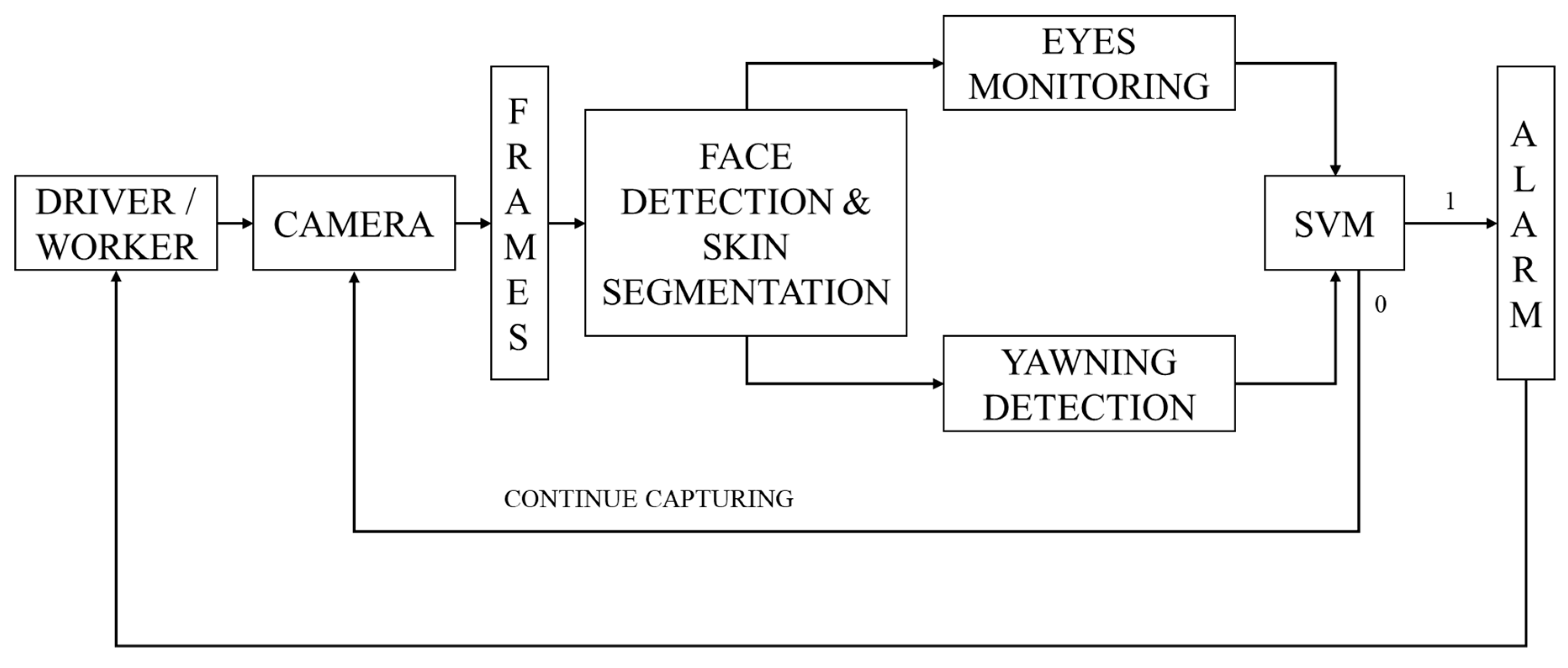
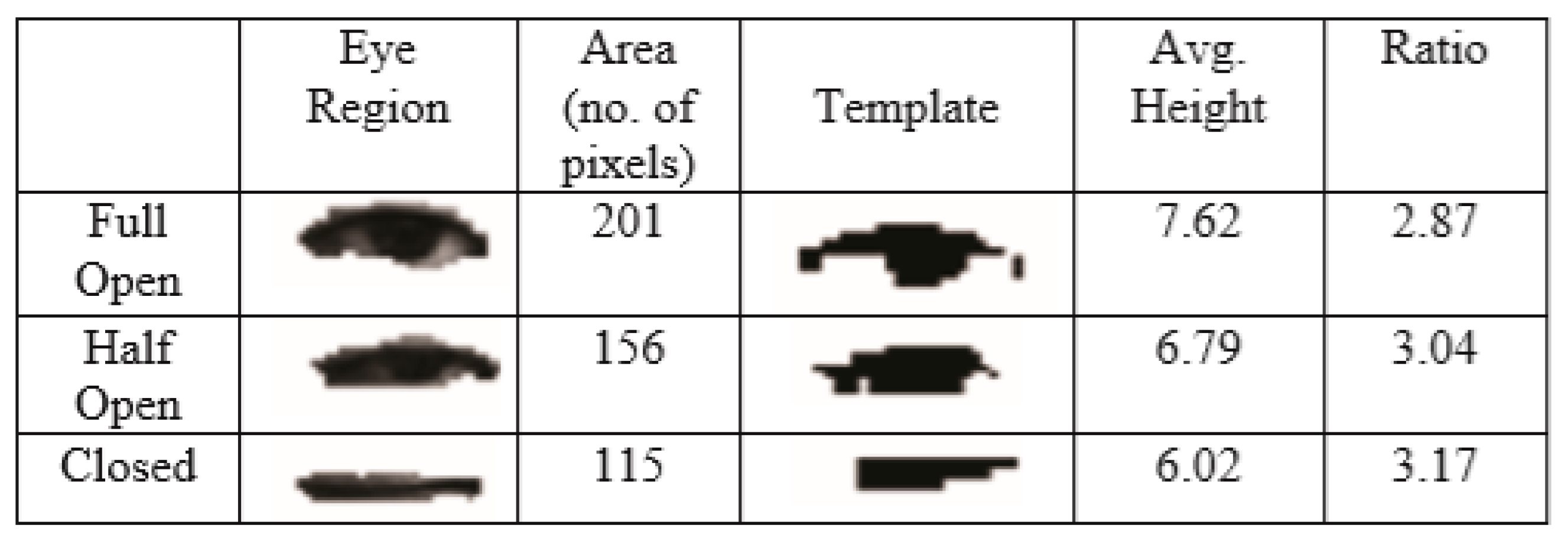

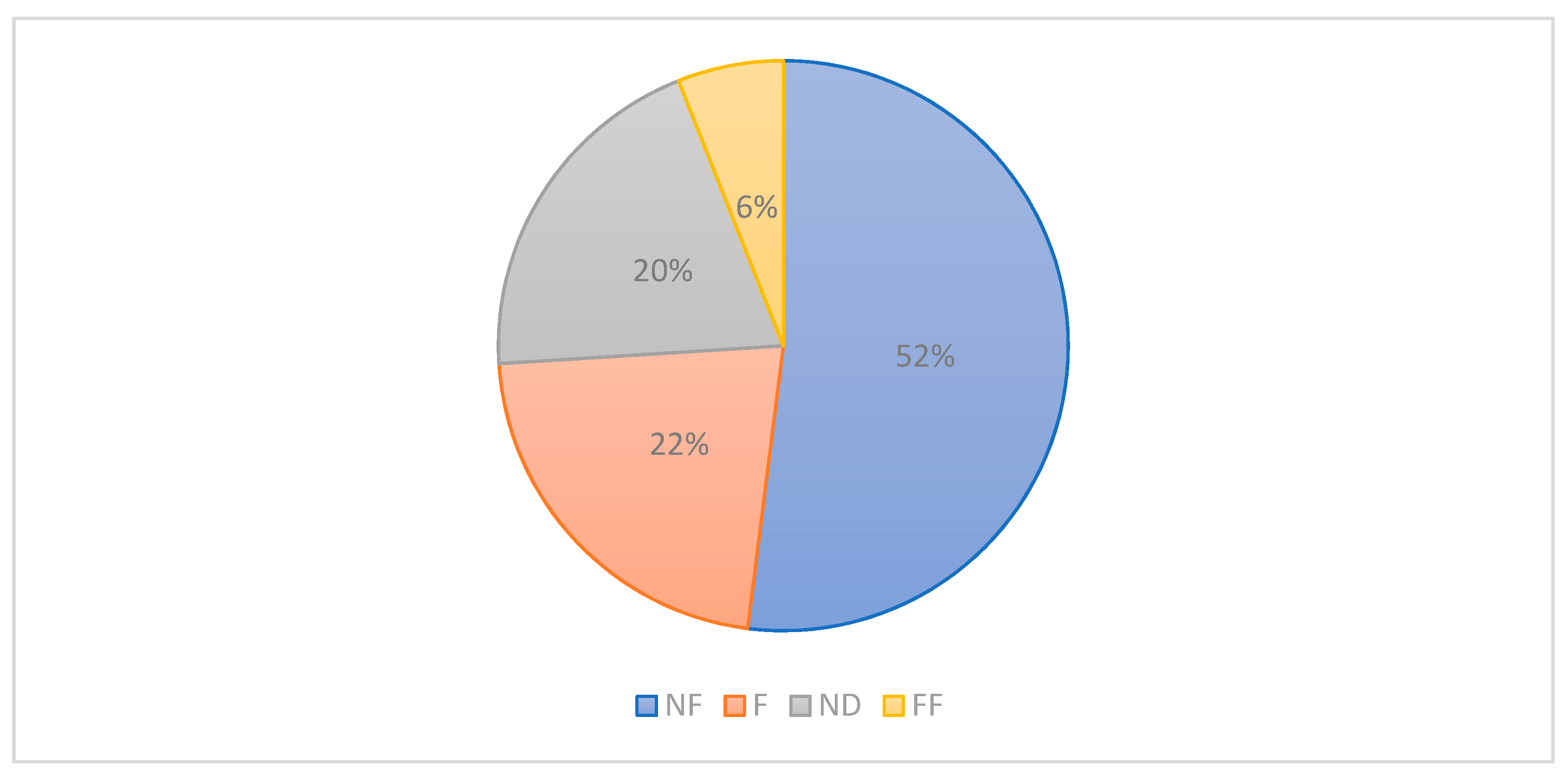
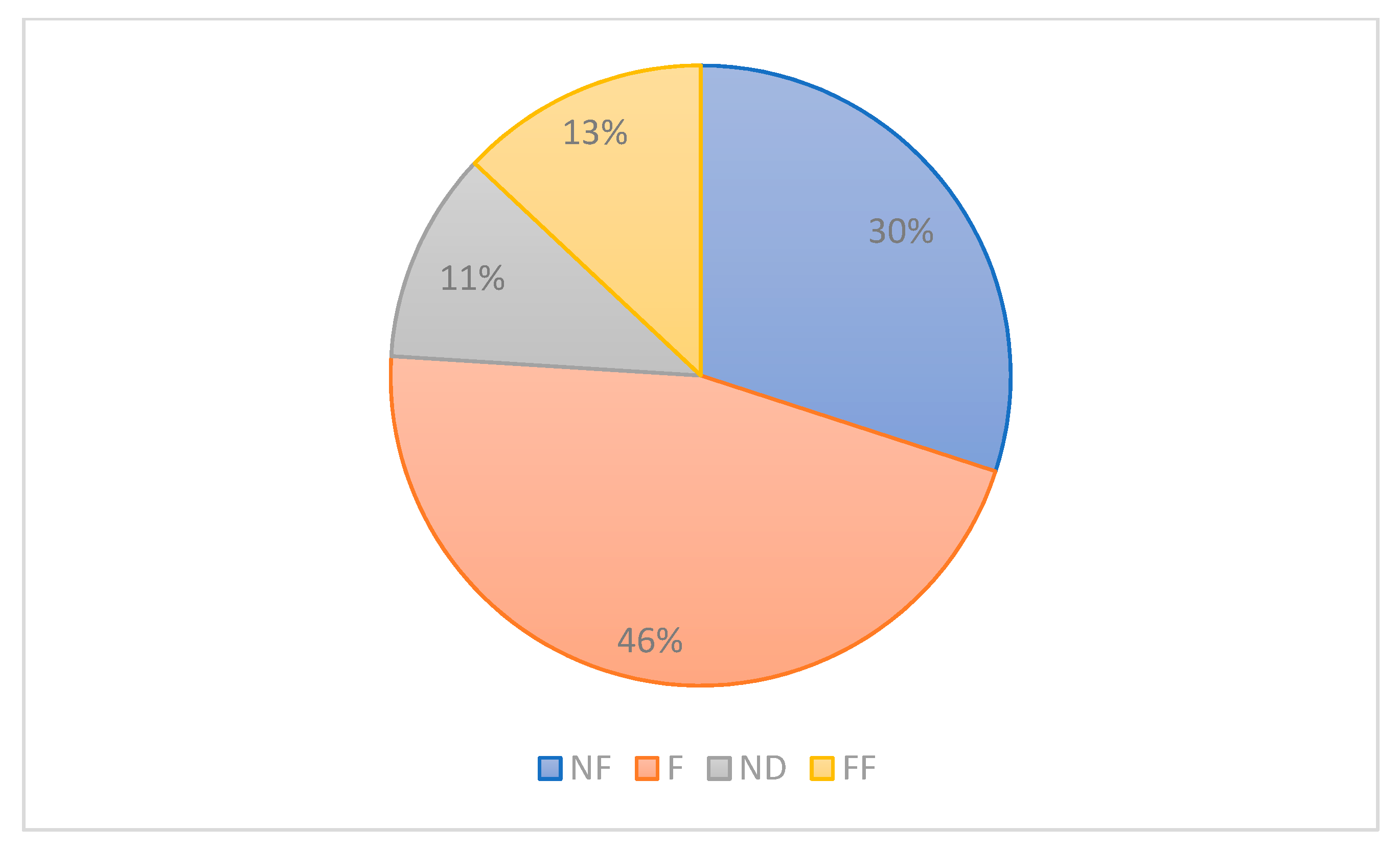
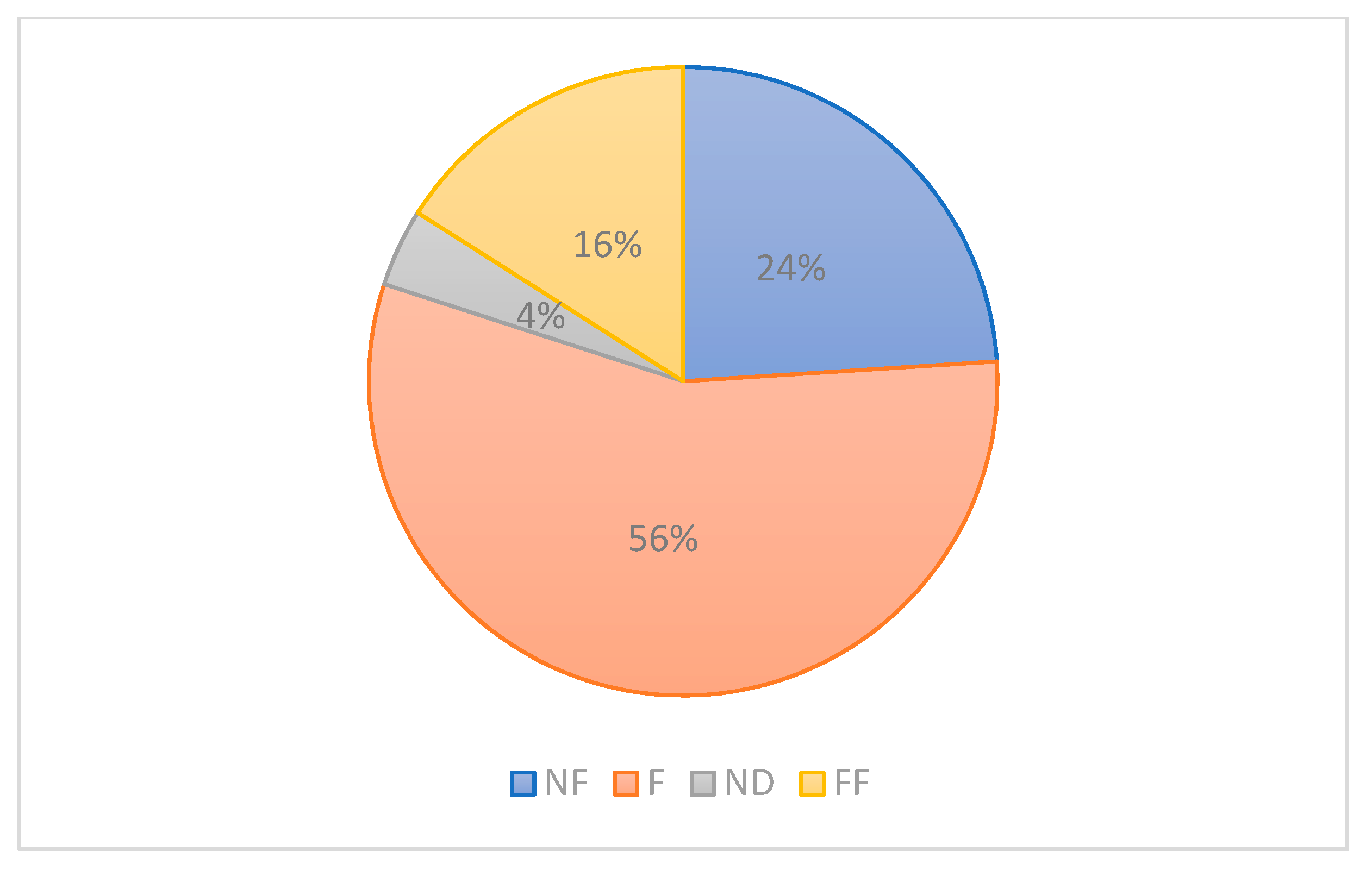

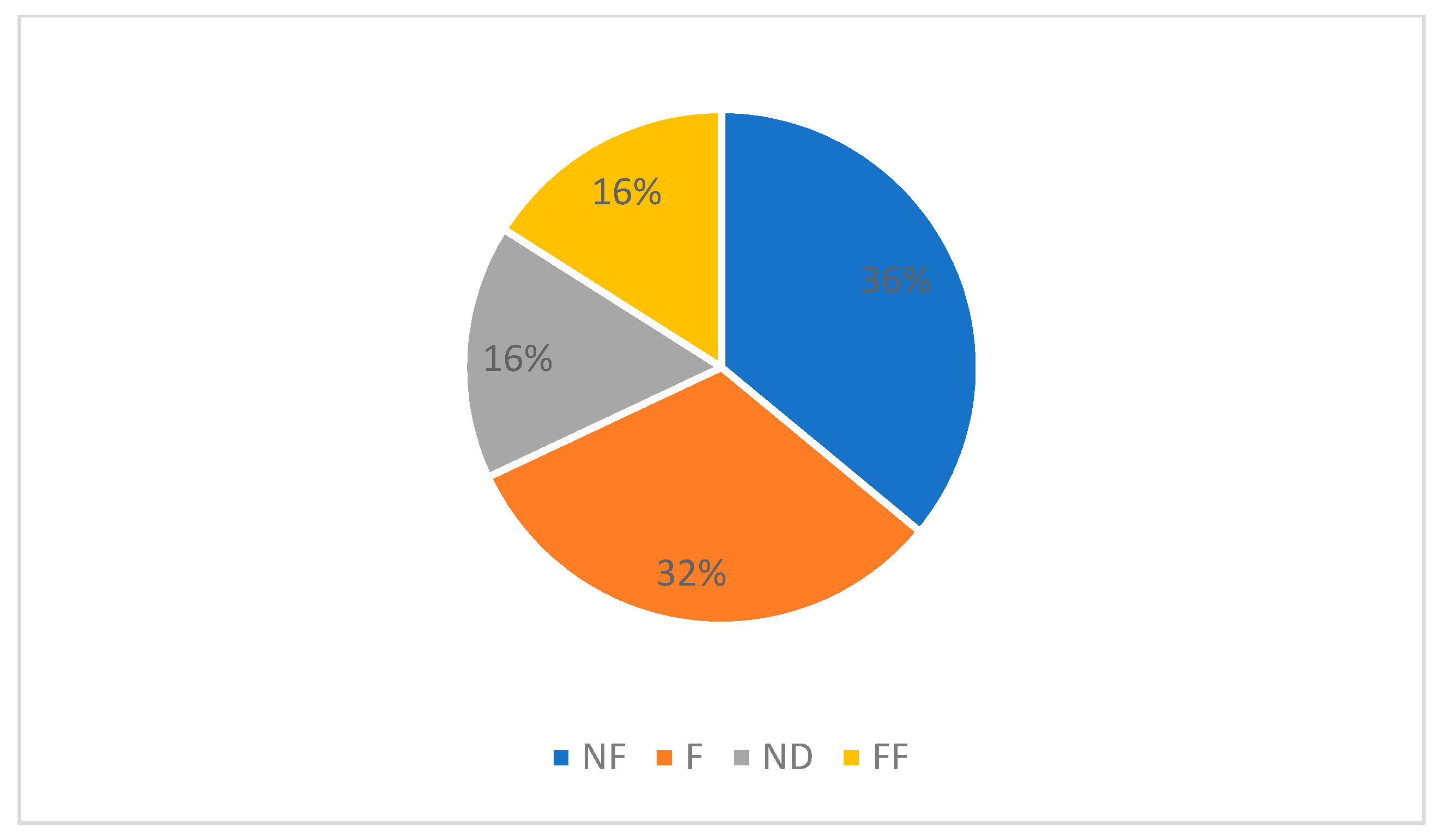


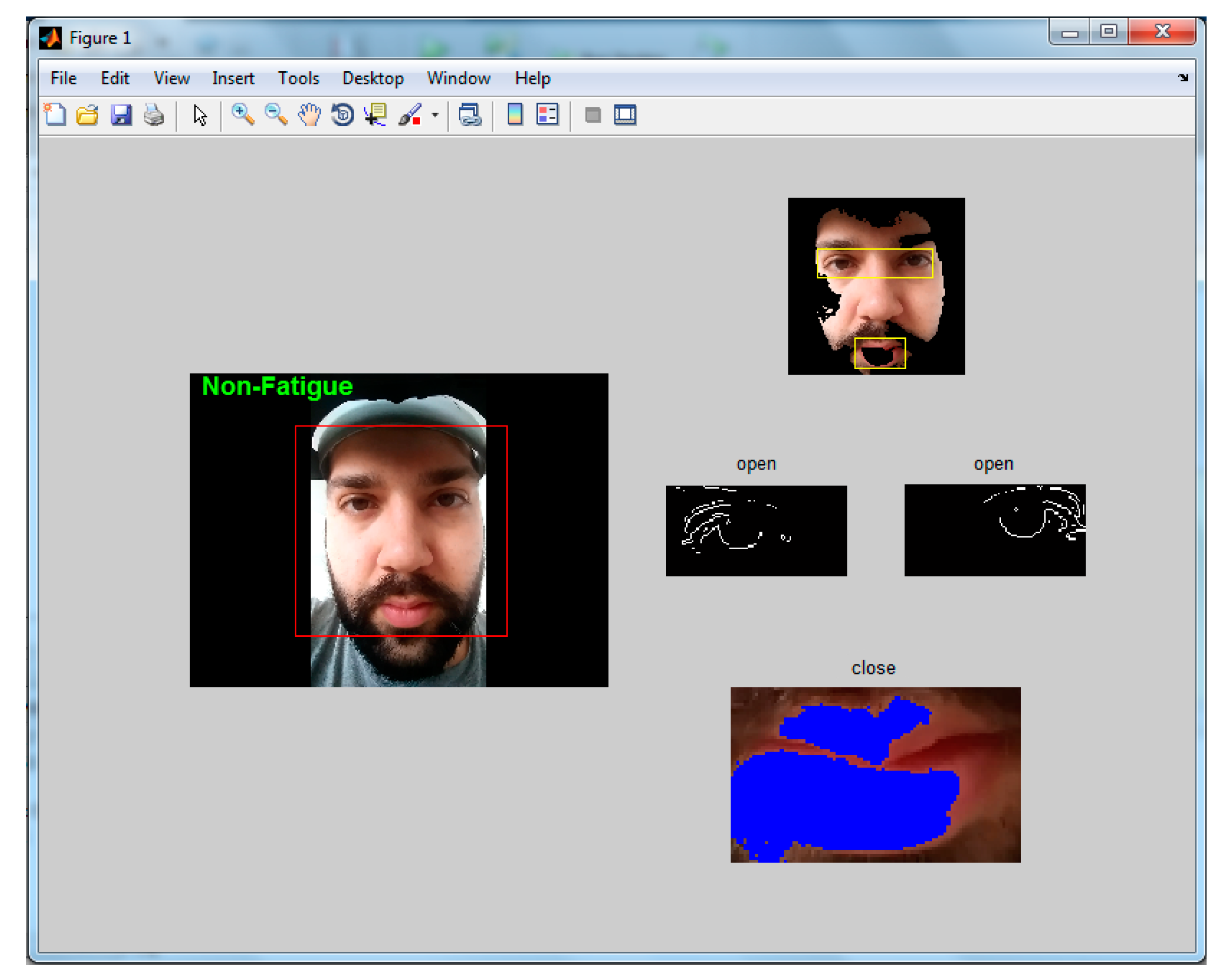
Publisher’s Note: MDPI stays neutral with regard to jurisdictional claims in published maps and institutional affiliations. |
© 2020 by the authors. Licensee MDPI, Basel, Switzerland. This article is an open access article distributed under the terms and conditions of the Creative Commons Attribution (CC BY) license (http://creativecommons.org/licenses/by/4.0/).
Share and Cite
Fera, M.; De Padova, V.; Di Pasquale, V.; Caputo, F.; Caterino, M.; Macchiaroli, R. Workers’ Aging Management—Human Fatigue at Work: An Experimental Offices Study. Appl. Sci. 2020, 10, 7693. https://doi.org/10.3390/app10217693
Fera M, De Padova V, Di Pasquale V, Caputo F, Caterino M, Macchiaroli R. Workers’ Aging Management—Human Fatigue at Work: An Experimental Offices Study. Applied Sciences. 2020; 10(21):7693. https://doi.org/10.3390/app10217693
Chicago/Turabian StyleFera, Marcello, Vittoria De Padova, Valentina Di Pasquale, Francesco Caputo, Mario Caterino, and Roberto Macchiaroli. 2020. "Workers’ Aging Management—Human Fatigue at Work: An Experimental Offices Study" Applied Sciences 10, no. 21: 7693. https://doi.org/10.3390/app10217693




